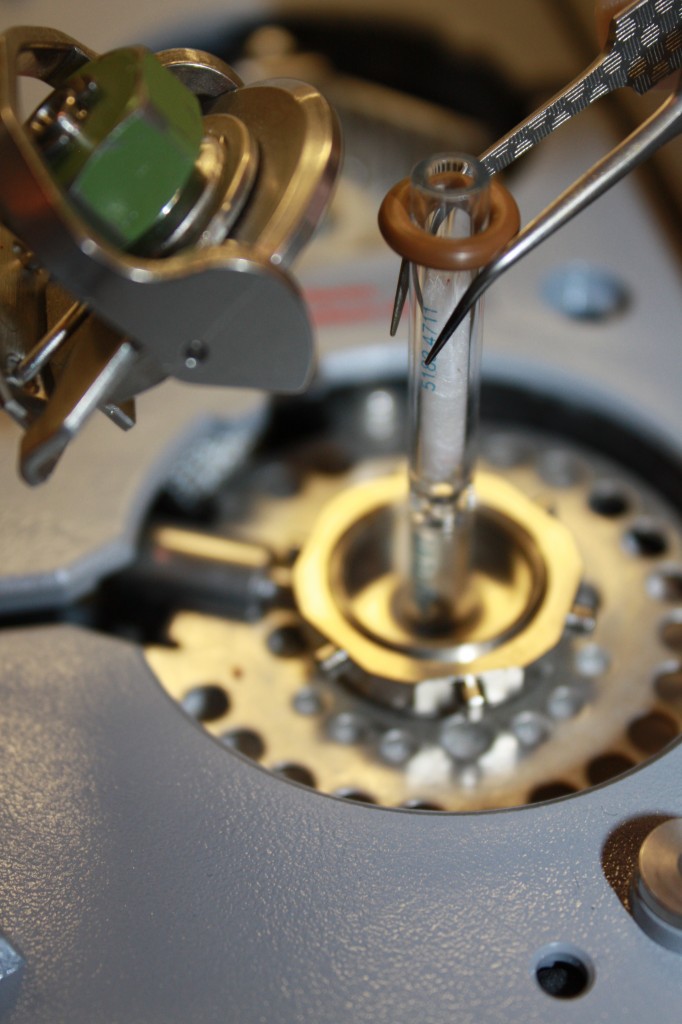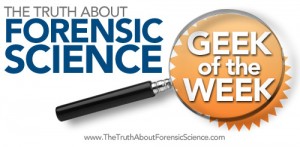The Forensic Science Geek of the Week
Please visit the www.TheTruthAboutForensicScience.com FaceBook fan page.
The week 53 “www.TheTruthAboutForensicScience.com Forensic Science Geek of the Week” honors goes to: Eric Ganci, Esquire
-

The Week 53 Forensic Science Geek of the Week: Eric Ganci, Esquire
According to his website: “Eric Ganci focuses his practice exclusively on DUI defense. Many, many lawyers do not understand the specifics regarding field sobriety tests, absorption and elimination of alcohol into your body, and variables with breath and blood tests. And many more lawyers are scared to take DUI cases to trial because of lack of experience and education with DUI cases.
Eric is a proud San Diego DUI trial attorney. He is trained in standardized field sobriety tests, at the officer and instructor level, and is qualified to teach police officers DUI procedures and standardized field sobriety testing. Eric is also a member of the California DUI Lawyers Association and the National College of DUI Defense (NCDD), where he attended the NCDD Summer Session conducted at the Harvard Law School. In addition, Eric researched and wrote for the supplement of “California Drunk Driving Defense,” considered California’s “DUI Bible.”
In 2010, Eric was awarded as a San Diego Daily Transcript 2010 Young Attorney Finalist, and in 2011 he was awarded the San Diego County Bar Association Outstanding Service by a New Lawyer. See his Results page for recent DUI victories.
Eric focuses on the fundamentals of personal interaction, including taking your phone calls and always returning calls/emails within a 24 hour business day. It seems simple, but unfortunately this is a lost art.” Also he is a recent graduate of the week-long hands-on 2011 ACS Forensic Chromatography III class held at Axion Labs, Inc. in Chicago, Illinois.
Congratulations to our Forensic Science Geek of the Week winner!
See the challenge question that our winner correctly answered.
OFFICIAL QUESTION:
-

- Forensic Science Geek of the Week Challenge
1. What is being removed by the tweasers?
2. What is its purpose?
3. What device is it primarily used in?
Our Geek of the Week answered:
1. What is being removed by the tweezers? Inlet Liner
2. What is its purpose? To allow the insertion of a sample into the GC in a repeatable, reproducible manner.
3. What device is it primarily used in? Gas Chromatograph, usually split injection
[BLOGGER’S NOTE: Just to amplify an otherwise sufficient answer, we add as follows:
It is the inlet liner. It is but one of the many consumable portions (just in the injector port) that must be replaced periodically to insure reproducibility and robustness in the GC. There is no hard and fast “must replace by” time for these items as determined by the manufacturer or validated in a scientific sense. It should be a data driven decision. Agilent recommends (keyword) monthly replacement of these items for Volatile Organic Compound (VOCs) sampled by headspace, which is what we usually do. If it is direct injection, then it needs to be more frequently changed.
The wear on these consumables depends upon the use of the GC (volume of throughput) and the matrix examined. If it is not direct injection and if the instrument, it is seeking to sample only VOCs and the method always calls for headspace analysis (i.e., it is a dedicated machine) then these items do not need to be replaced as frequently. They do need to be replaced. Generally in industry there is a Good Laboratory Practice instruction that is set up with some sort of replacement schedule. That being said we, in the forensic science arena, are in the non-regulated world (as opposed to EPA or FDA) and therefore what I most see with labs all across the US they either have some sort of replacement schedule (which is very rare) or when they see abnormal results, then they consult with the manufacturer who teaches them the importance of these consumables.
The function of the inlet liner is to act as a last place of resort to trap any “junk” that would be introduced onto the column and also to allow for homogenized distribution of the vapor to reduce random sampling error. N.B., there are also many different types and configurations of inlet liners that can affect the performance of the instrument and the validity of the result both in terms of the qualitative measure and the quantitative measure of that qualitative measure.]
The Hall of Fame for the www.TheTruthAboutForensicScience.com Forensic Science Geek of the Week:
Week 1: Chuck Ramsay, Esquire
Week 2: Rick McIndoe, PhD
Week 3: Christine Funk, Esquire
Week 4: Stephen Daniels
Week 5: Stephen Daniels
Week 6: Richard Middlebrook, Esquire
Week 7: Christine Funk, Esquire
Week 8: Ron Moore, B.S., J.D.
Week 9: Ron Moore, B.S., J.D.
Week 10: Kelly Case, Esquire and Michael Dye, Esquire
Week 11: Brian Manchester, Esquire
Week 12: Ron Moore, B.S., J.D.
Week 13: Ron Moore, B.S., J.D.
Week 14: Josh Lee, Esquire
Week 15: Joshua Dale, Esquire and Steven W. Hernandez, Esquire
Week 16: Christine Funk, Esquire
Week 17: Joshua Dale, Esquire
Week 18: Glen Neeley, Esquire
Week 19: Amanda Bynum, Esquire
Week 20: Josh Lee, Esquire
Week 21: Glen Neeley, Esquire
Week 22: Stephen Daniels
Week 23: Ron Moore, B.S., J.D.
Week 24: Bobby Spinks
Week 25: Jon Woolsey, Esquire
Week 26: Mehul B. Anjaria
Week 27: Richard Middlebrook, Esquire
Week 28: Ron Moore, Esquire
Week 29: Ron Moore, Esquire
Week 30: C. Jeffrey Sifers, Esquire
Week 31: Ron Moore, Esquire
Week 32: Mehul B. Anjaria
Week 33: Andy Johnston
Week 34: Ralph R. Ristenbatt, III
Week 35: Brian Manchester, Esquire
Week 36: Ron Moore, Esquire
Week 38: Pam King, Esquire
Week 39: Josh Lee, Esquire
Week 40: Robert Lantz, Ph.D.
WEEK 41: UNCLAIMED, IT COULD BE YOU!
Week 42: Steven W. Hernandez, Esquire
Week 43: Ron Moore, Esquire
Week 44: Mehul B. Anjaria
Week 45: Mehul B. Anjaria
Week 46: Ron Moore, Esquire
Week 47: Ron Moore, Esquire
Week 47: Ron Moore, Esquire
Week 48: Leslie M. Sammis, Esquire
Week 49: UNCLAIMED, IT COULD BE YOU!
Week 50: Jeffery Benson
Week 51: Mehul B. Anjaria
Week 52: UNCLAIMED, IT COULD BE YOU!
Week 53: Eric Ganci, Esquire



